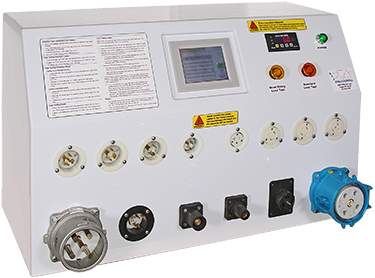zbang
Senior Member
- Location
- Roughly 5346 miles from Earls Court
I recently did an outdoor event and we rented six spider-box distro panels (camlock in, 14 CS connectors out) from a local company. They were built by Trystar and looked like they'd never been used. They also came with a N/G bonding jumper inside and a sticker on the back about it. Why? I can't think of a place where you would use one of these boxes and would want a bonding jumper in the box itself. The generators are all bonded properly at the genny, and the any other tie-in should have it's own jumper. Best I can come up with is maybe some case of a SDS from a transformer, but usually the bond will be in the transformer case or output OCP/disconnect. I certainly don't want it down 300' of 5-wire feeder from the source.
We removed the bond and added a "bond removed" label next to the "it's bonded" one.
We removed the bond and added a "bond removed" label next to the "it's bonded" one.


